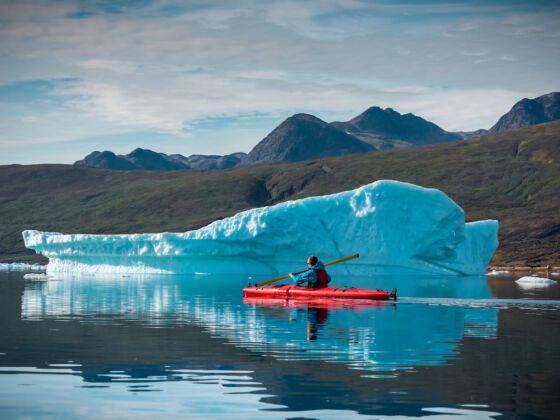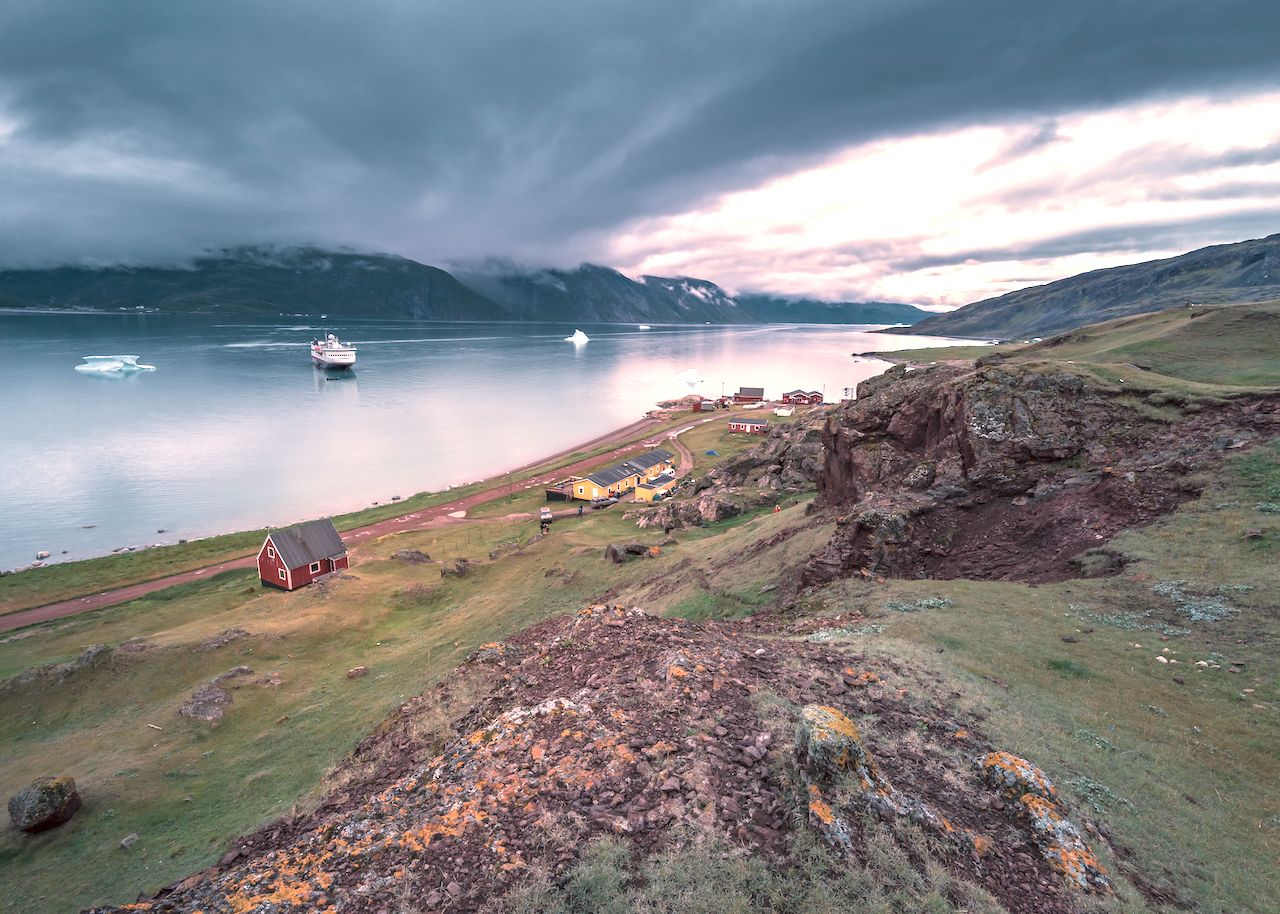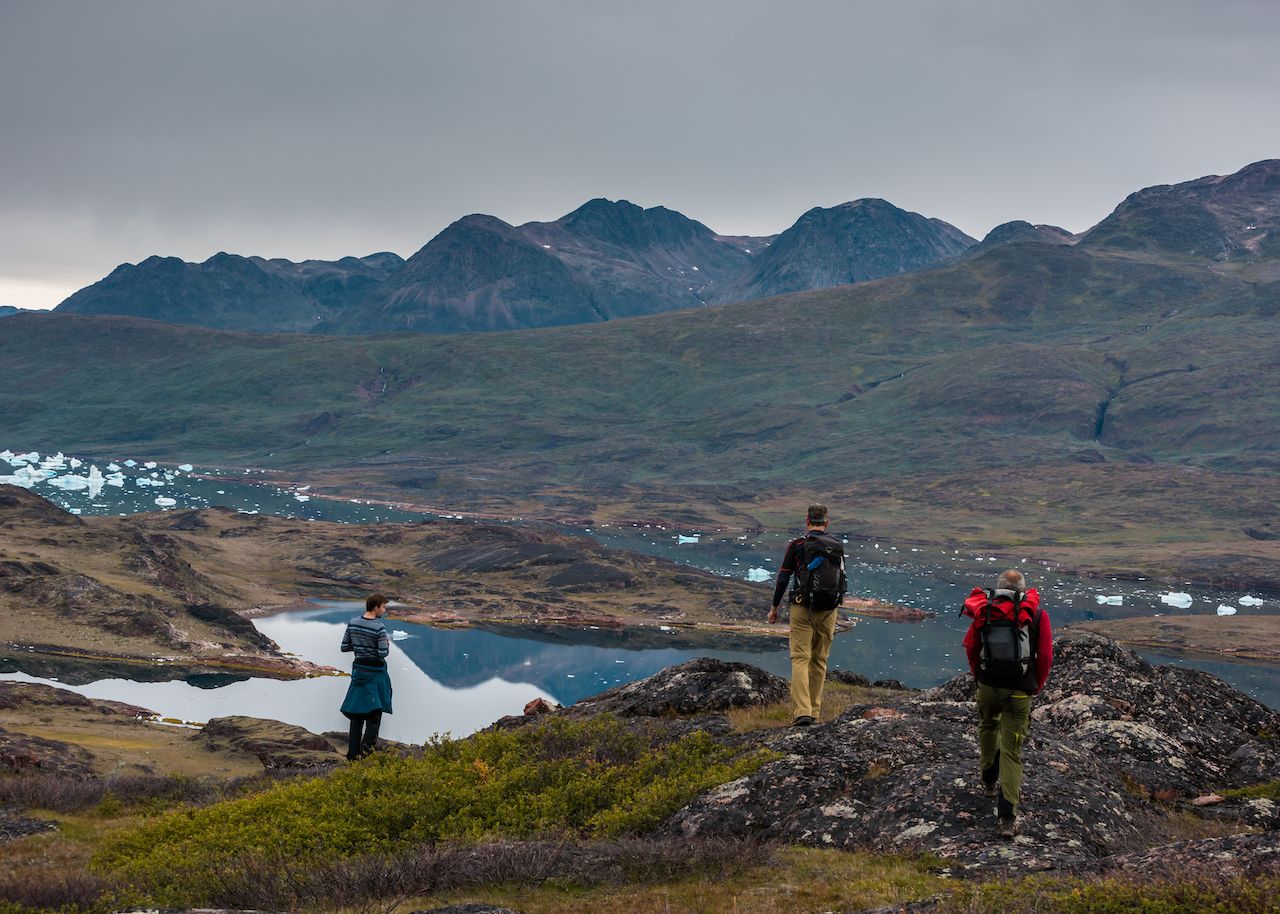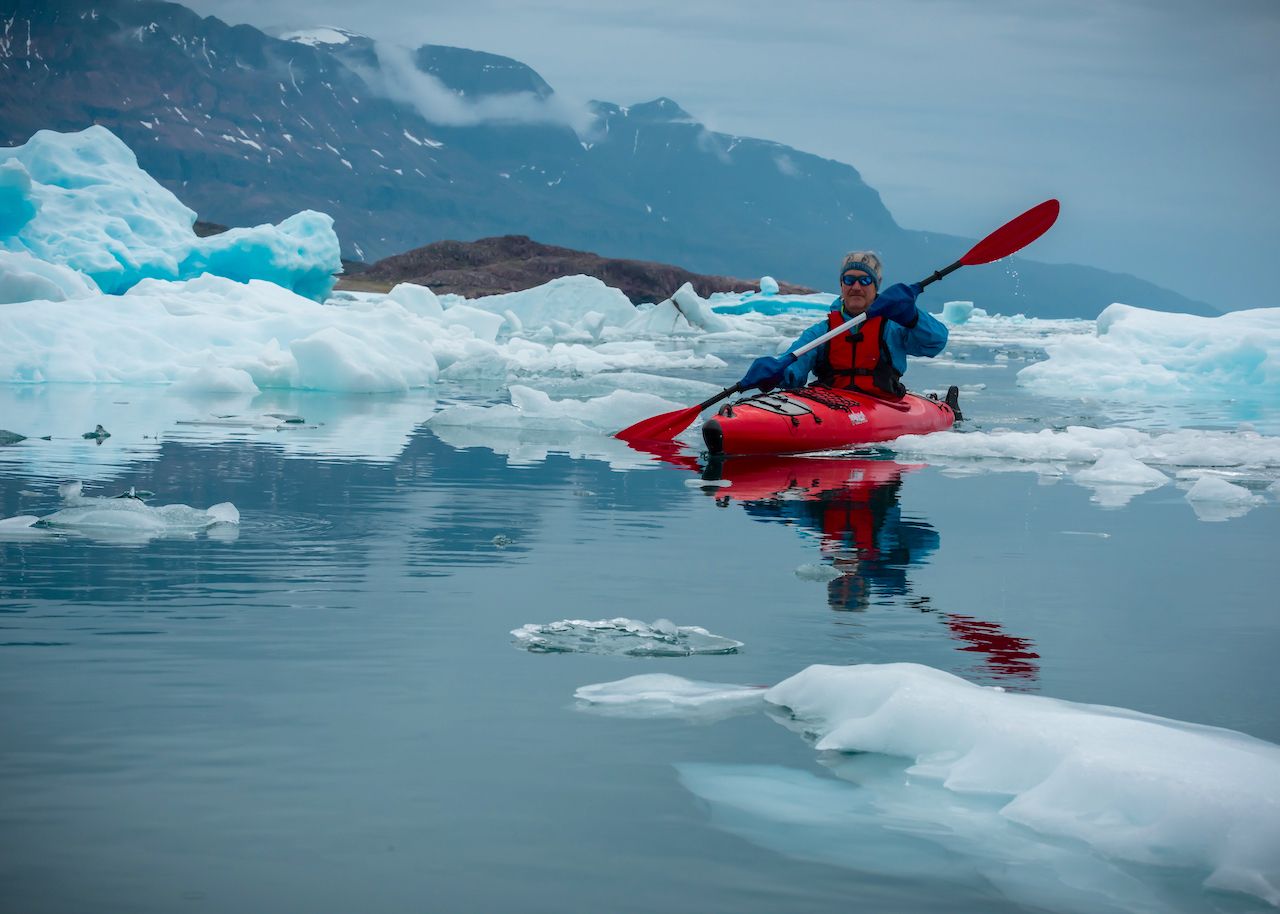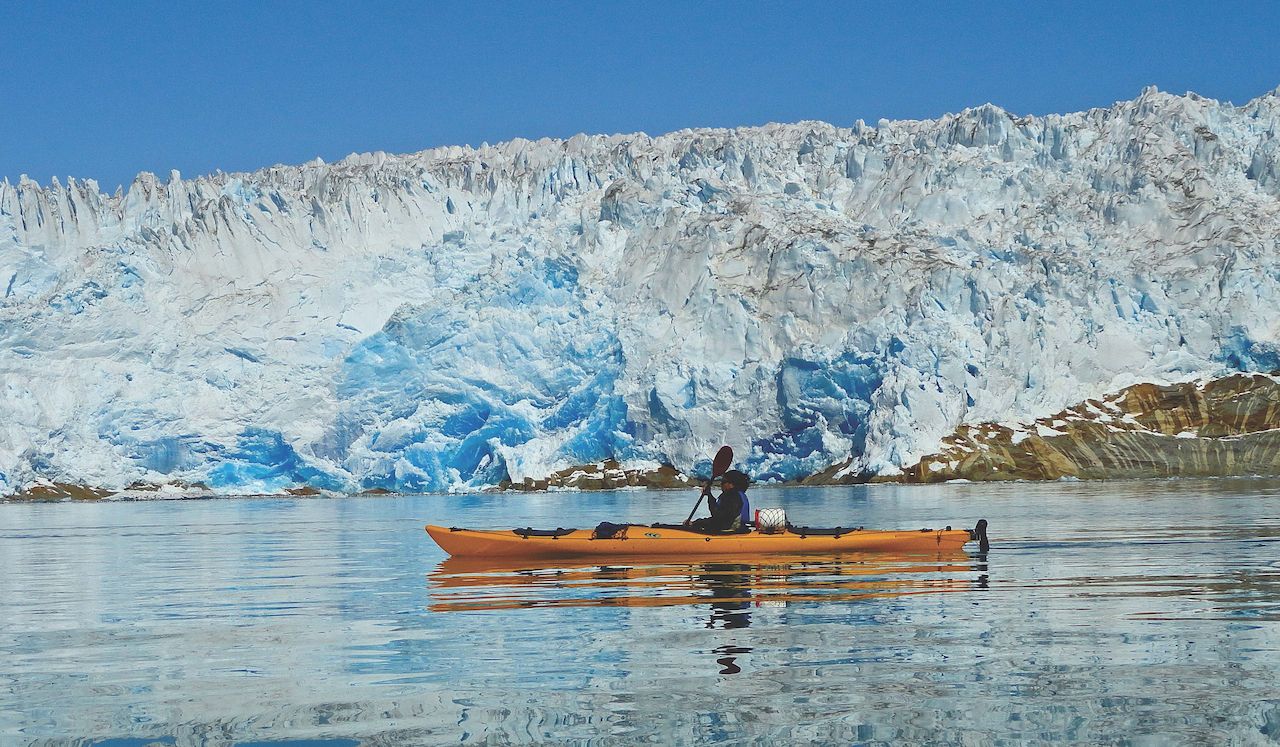With each paddle stroke, my kayak cuts through the black water scattered with ice. I’m able to safely navigate the ice strewn fjord and maintain a safe distance from larger, imposing icebergs shimmering and melting in the midday sun. What I’m seeing above the surface is only a fraction of what sits below.
Off in the distance I can hear new icebergs calving from the glacier that we have yet to see. The only other sound in this icy labyrinth is the occasional rolling of a berg as its weight changes from systematic melting on the exposed surface. The plastic hull of my bright red kayak collides with smaller chunks of ice while others eerily roll under my boat down the length of the hull before emerging near the stern.
However, I’ve got a little ahead of myself. My journey to this remote destination on the world’s largest island began days earlier and involved nearly two trips across the Atlantic Ocean.
